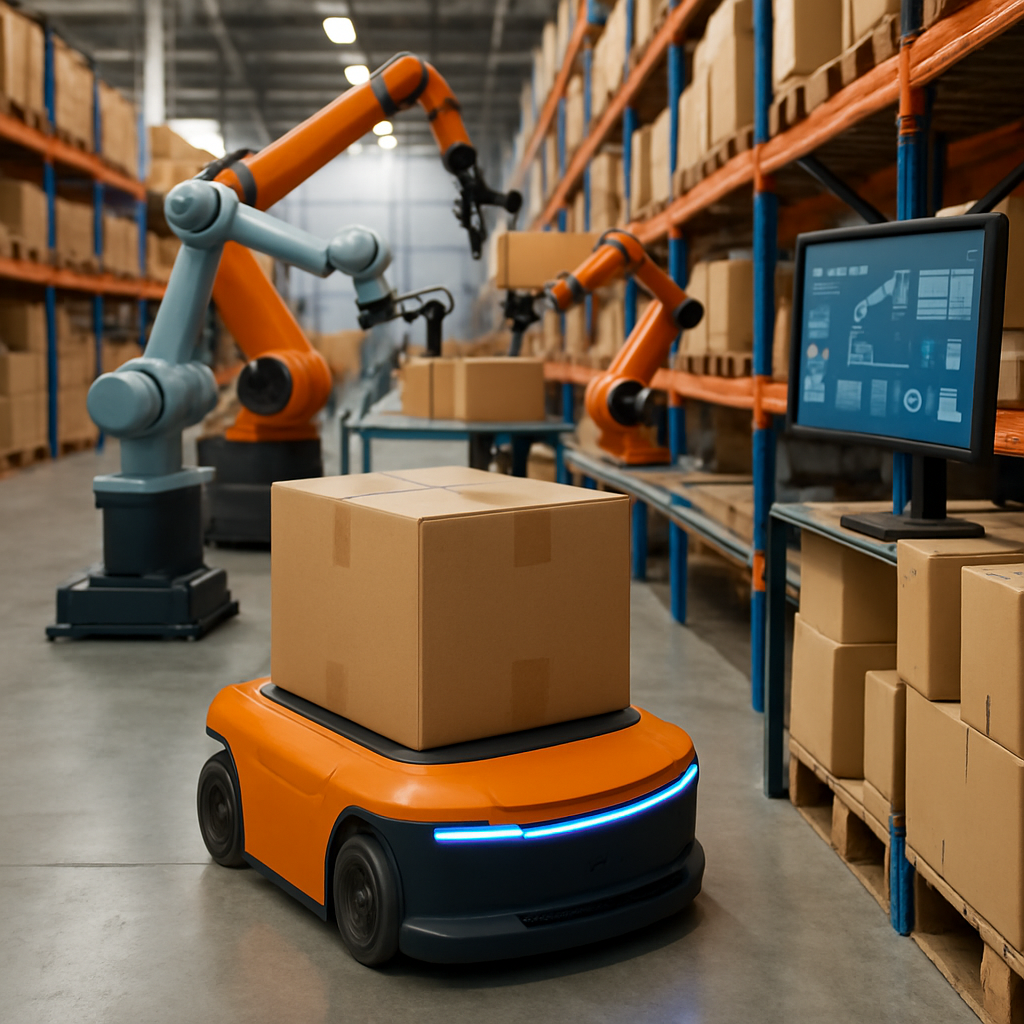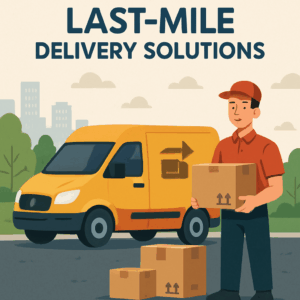The Ultimate How-to Guide to Warehouse Automation & Technology in Malaysia
Introduction
In today’s fast-paced commercial landscape, warehouse automation is rapidly transforming supply chain operations across Malaysia. No longer a distant vision or futuristic fantasy, warehouse automation Malaysia is fast becoming a necessity for corporations aiming to optimize performance, improve agility, and outperform competitors in the increasingly demanding ASEAN marketplace.
With rising consumer expectations for rapid delivery, ever-increasing product diversity, and persistent labor challenges, companies are under intense pressure to modernize their logistics. As a result, the adoption of automated storage systems, robotics in warehouses, and other smart warehouse solutions has moved from being a competitive advantage to an operational imperative.
This comprehensive how-to guide explores the current state of warehouse automation in Malaysia, demystifies the technology, and provides actionable steps, real-world examples, and expert insights to empower corporate professionals. Whether you’re in retail, manufacturing, e-commerce, or distribution, the knowledge here will position your business at the cutting edge of warehouse management transformation.
Table of Contents
- The State of Warehouse Automation in Malaysia
- Core Technologies Powering Modern Malaysian Warehouses
- Benefits of Warehouse Automation
- Challenges & Solutions in Implementation
- Step-by-Step Guide: How to Automate Your Malaysian Warehouse
- Case Studies: Malaysian Successes in Warehouse Automation
- Best Practices for Seamless Adoption & Maximizing ROI
- Future Trends: What’s Next for Warehouse Automation in Malaysia?
- Conclusion
1. The State of Warehouse Automation in Malaysia
Warehouse automation in Malaysia is in the midst of a major transformation. Buoyed by the nation’s ambition to cement its position as a premier Southeast Asian logistics and e-commerce hub, both multinational and local businesses are taking bold steps to automate their warehouses.
Key Drivers of Adoption
- E-Commerce Boom: Malaysia’s e-commerce market, valued at over USD 4 billion in 2022, continues to grow at a brisk pace (16% CAGR expected till 2025).
- Rising Labor Costs & Shortages: Persistent skills shortages, increasing minimum wages, and high turnover push businesses towards automation.
- Government Support: Industry4WRD incentives by agencies like MIDA promote smart technology adoption.
- Client Expectations: Customers demand faster, error-free delivery, driving automation urgency.
Current Landscape
Malaysian warehouses span the automation spectrum—from basic belt systems to advanced smart warehouse solutions with AI and robotics integration. Urban hubs like Kuala Lumpur, Penang, and Johor Bahru lead in adoption.
Example: COVID-19 as a Catalyst
A consumer electronics distributor in Shah Alam installed an automated storage system with pick-to-light after staff shortages caused order backlogs. Result: 50% productivity increase even with a leaner workforce.
2. Core Technologies Powering Modern Malaysian Warehouses
Automated Storage & Retrieval Systems (AS/RS)
Definition & Functionality: Computer-controlled systems that store and retrieve goods using stacker cranes, carousels, shuttles, or vertical lifts.
Key Features:
- High-density storage efficiency
- Integrated tracking through WMS
- Reduced floor and aisle space usage
Use Cases in Malaysia:
- Klang Valley e-commerce centers use AS/RS for space optimization.
- Cold-chain players in Penang deploy freezer-grade AS/RS to automate and preserve stock.
Detailed Example: An electronics distributor in Johor achieved 99.8% pick accuracy and saved 30% in warehouse space by moving to ERP-integrated AS/RS systems.
Robotics in Warehouses
Types of Robots:
- Order-picking robots: Mobile robots aid in item retrieval.
- Robotic arms: Used at packing or sorting stations.
- AGVs and automated forklifts: Autonomously transport goods around the facility.
Malaysian Use Cases:
- Port Klang logistic centers deployed 50+ robots, cutting pick times by half.
- Malacca F&B firms saw 35% productivity boosts using robotic packing arms.
Anecdote: A Johor-based auto parts maker reduced injuries by 65% using cobots, improving both safety and worker morale.
IoT-Enabled Smart Warehouse Solutions
How It Works: Sensors and smart devices collect and transmit data to monitor operations and act intelligently.
Practical Applications:
- Temperature/Humidity Monitoring
- RFID-based real-time asset tracking
- Predictive maintenance for machinery
Example: A Selangor pharma company uses IoT to manage cold chain logistics, avoiding quality failures and bolstering audit readiness.
Warehouse Management Systems (WMS)
Role: The central digital brain that coordinates activities, tracks inventory, assigns tasks, and gathers analytics.
- Real-time inventory accuracy
- Workforce optimization
- Automation integration (robots/ASRS)
- Customized to Malaysian customs & duties
Example: An FMCG hub in Penang connected its WMS with automation tools and slashed lead time from 48 to 24 hours while eliminating out-of-stock incidents by 85%.
3. Benefits of Warehouse Automation
Operational Efficiency and Cost Reduction
- Faster throughput: Order cycle times can drop by 70%
- Labor cost control: Up to 60% reduction in manual workforce expense
- Peak readiness: Eases pressures during festive or sales surge periods
Accuracy and Error Reduction
- Improved picking precision: Error rates dip below 0.5%
- Minimized returns: Thanks to fewer wrong or damaged deliveries
- WMS intelligence: Prevents losses or expiry of goods
Space Optimization
Systems like AS/RS increase vertical space usage and packing density.
Example: A Subang Jaya importer increased storage by 45% in the same warehouse using AS/RS improvements.
Safety and Compliance
- Reduced injuries: Less lifting and forklift usage
- Audit trails: Automation aids in compliance with industry, halal, and tax regulations
Responsiveness and Customer Delight
- Rapid deliveries: Same/next-day fulfillment possible
- Customer trust: Real-time updates build transparency
4. Challenges & Solutions in Implementation
Common Challenges
- High Capital Expenditure – Technology costs can deter SMEs.
- Change Management – Resistance due to job security fears.
- Integration Barriers – Linking to legacy ERP/software is difficult.
- Skills Shortages – Skilled automation professionals are limited.
- Regulatory Compliance – Meeting local certifications requires customization.
Proven Solutions
- Incentives: Industry4WRD grants from MIDA lower entry costs.
- Pilot Projects: Begin with areas that promise fast wins.
- Staff Upskilling: Use tech vendor training to future-proof teams.
- Expert Partners: Partner with local integrators for Malaysian market alignment.
- Maintenance Contracts: Avoid downtime through proactive tech support.
5. Step-by-Step Guide: How to Automate Your Malaysian Warehouse
Step 1: Assess Your Current Operations
- Workflow mapping
- Inventory profiling
Example: A KL retailer automated only the top 20% SKUs that made up 80% of sales, maximizing ROI.
Step 2: Set Clear, Measurable Objectives
- Establish KPIs (accuracy, lead times)
- Unite departments in planning
Step 3: Research and Vet Technology Solutions
- Compare vendors
- Request hands-on demos
- Test for local climate/compliance compatibility
Example: A Selangor food processor installed chiller AS/RS compatible with halal and food safety systems.
Step 4: Plan Modular, Scalable Implementation
- Run feasibility analysis (TCO)
- Begin with high-ROI zones
- Plan system integration path
Step 5: Train, Test, and Transition
- Train staff on-site and online
- Test new/old systems side-by-side
- Document new SOPs
Step 6: Monitor, Optimize, and Scale
- Track KPIs and analytics
- Gather staff feedback
- Apply for grants as you scale
6. Case Studies: Malaysian Successes in Warehouse Automation
Case Study 1: Kuala Lumpur E-Commerce Fulfillment Center
- Challenge: Limited space, high errors, temp staff shortage
- Solution: AS/RS + cloud WMS + RFID
- Results: 99.9% accuracy, +50% storage, lower staff turnover
“Automating our warehouse didn’t replace our staff—it empowered them.”
Case Study 2: Penang Electronics Distributor
- Challenge: High returns
- Solution: WMS + pick-to-light AS/RS
- Outcome: 70% return drop in 6 months
Case Study 3: Food Logistics Provider in Johor
- Challenge: Manual cold chain tracking
- Solution: IoT + WMS alerts
- Outcome: Prevented spoilage, audit-ready tracking
Case Study 4: Auto Spare Parts Manufacturer
- Challenge: Manual lifting injuries
- Solution: AGVs + cobots
- Outcome: 65% fewer injuries, higher staff satisfaction
7. Best Practices for Seamless Adoption & Maximizing ROI
- Start with fast-ROI areas
- Collaborate with local talent and integrators
- Choose interoperable platforms
- Use real-time dashboards
- Drive continuous staff engagement
- Track KPIs quarterly
- Time investments with available grants
- Communicate change clearly across teams
8. Future Trends: What’s Next for Warehouse Automation in Malaysia?
1. AI-Driven Optimization
Real-time learning for storage layouts, demand prediction, and robotic performance.
2. Greener Warehousing
- Solar-powered automation
- Smart packaging
- Eco-compliant clients demand ESG strategies
3. 5G and Fast Connectivity
Real-time communication among devices, robots, and data centers.
4. Drones and Autonomous Vehicles
Experimental use in inventory and last-mile transport is underway.
5. Human-Robot Collaboration
Cobots working alongside upskilled human workers will become norm.
6. Blockchain Supply Chain
Improved traceability and customs clearance through decentralized ledgers.
Forecast: By 2026, 30%+ of Malaysian large warehouses will use two or more forms of advanced automation.
Conclusion
The warehouse automation revolution in Malaysia is gaining momentum. From foundational tools like automated storage systems to cutting-edge robotics and AI, corporate professionals have an extraordinary opportunity at their fingertips.
Next Steps:
- Evaluate your current operations for improvement areas.
- Engage with local automation success stories.
- Take a phased, modular approach to technology adoption.
- Invest in your people alongside your tools.
- Maintain a learning mindset and don’t stop optimizing.
Are you ready to unlock the full potential of warehouse automation Malaysia?
Take the first step today for smarter, faster, and safer logistics in the heart of Southeast Asia.




